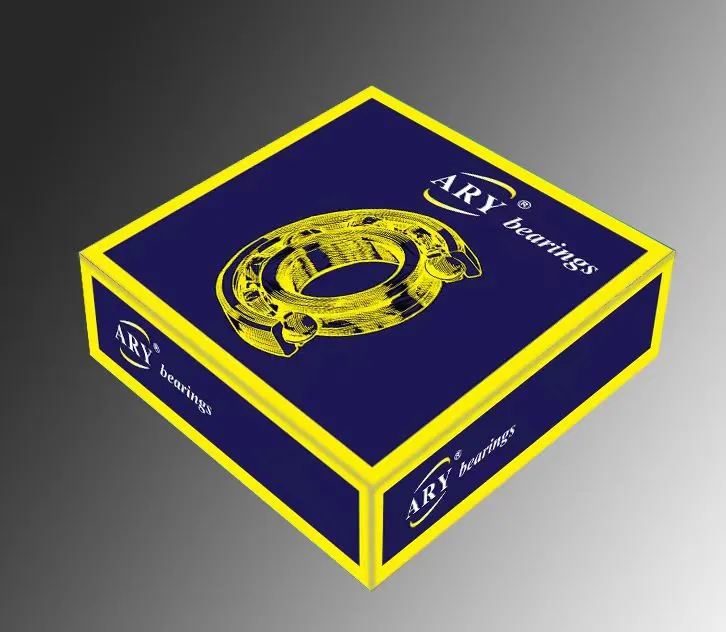
Dec . 27, 2024 12:27 Back to list
taper roller bearing failure analysis
Failure Analysis of Taper Roller Bearings
Taper roller bearings are critical components in various mechanical systems, widely used in automotive, industrial machinery, and aerospace applications due to their ability to bear heavy loads and withstand high speeds. However, like any mechanical component, they are susceptible to failure under certain conditions. Understanding the failure modes and mechanisms of taper roller bearings is essential for improving reliability and determining the causes of premature failures.
One common failure mode observed in taper roller bearings is fatigue. Over time, the repeated stress cycles during operation can initiate cracks in the bearing race or rolling elements. These cracks often start at the most stressed regions, usually along the contact surfaces. Once a crack propagates, it can lead to spalling, where material detaches from the surface, resulting in surface irregularities. This not only affects the load-carrying capacity of the bearing but also increases vibration and noise, causing further deterioration of the bearing and adjacent components.
Another prevalent failure type is abrasive wear, which occurs when contaminants, such as dirt or foreign particles, enter the bearing assembly. These contaminants can act as abrasives and gradually wear down the surfaces of the rollers and races. The presence of abrasive particles results in an increase in resistance and friction, leading to higher operating temperatures. In severe cases, this can lead to a complete bearing failure.
Misalignment is also a significant factor contributing to the premature failure of taper roller bearings. When bearings are not properly aligned, it can cause uneven loading, leading to increased stress on one side of the bearing. This misalignment can be due to improper installation, wear of mounting surfaces, or deformation of the housing. The uneven load distribution accelerates fatigue and leads to premature cracking and spalling of the bearing surfaces.
taper roller bearing failure analysis

Another critical aspect to consider is lubrication. Insufficient or improper lubrication can lead to increased friction, which, in turn, raises the operating temperature of the bearing. High temperatures can degrade lubricants, reducing their effectiveness and leading to accelerated wear. Conversely, excessive lubrication can also be detrimental, as it may result in aeration of the lubricant and ineffective lubrication of critical contact points.
In addition to these mechanical factors, environmental conditions can also influence the performance and lifespan of taper roller bearings. Exposure to moisture, corrosive substances, or extreme temperatures can lead to corrosion and material degradation. The onset of corrosion can result in pitting of the surfaces, affecting the bearings' ability to perform under load.
To mitigate these failures, it is crucial to adopt a proactive maintenance approach. Regular inspections and monitoring of the operational parameters, such as temperature, vibration, and noise levels, can help detect early signs of bearing distress. Additionally, ensuring proper alignment during installation, selecting the appropriate lubricants, and maintaining a clean environment free from contaminants are fundamental practices for extending the life of taper roller bearings.
In conclusion, the failure analysis of taper roller bearings reveals a range of potential issues stemming from fatigue, wear, misalignment, lubrication problems, and environmental influences. By understanding these failure modes and implementing effective maintenance strategies, the reliability of taper roller bearings can be significantly enhanced, leading to increased performance and longevity in mechanical systems.
Latest news
-
Ball Bearing 6001 – Reliable Deep Groove Bearings for Machinery & Industry
NewsNov.24,2025
-
Comprehensive Guide to 6305 2rsr Bearings – Specs, Uses & Vendors
NewsNov.24,2025
-
In-Depth Guide to 6003z Bearing Dimensions: Specs, Applications & Vendors
NewsNov.23,2025
-
Understanding the 6201 Z Bearing - Specifications, Applications, & Future Trends
NewsNov.23,2025
-
Everything You Need to Know About 6001 C3 Bearing – Specs, Uses, and Advantages
NewsNov.22,2025
-
6208 zz Bearing – Key Technical Insights, Applications & Vendor Comparison
NewsNov.22,2025
